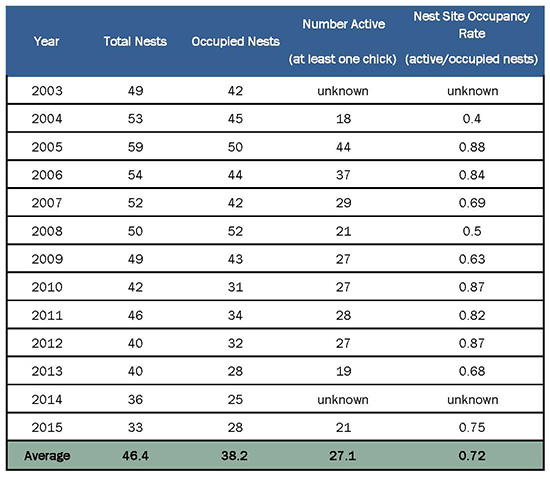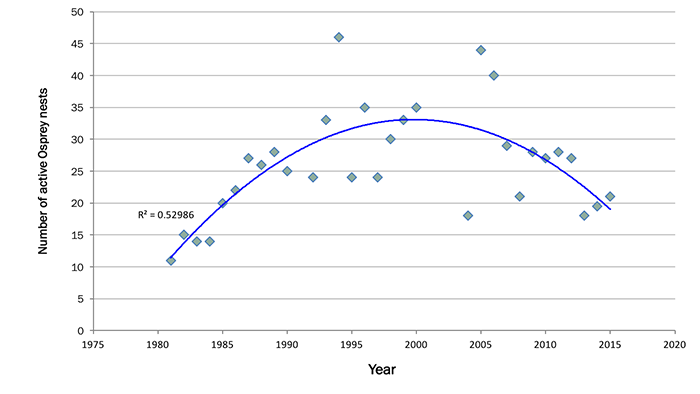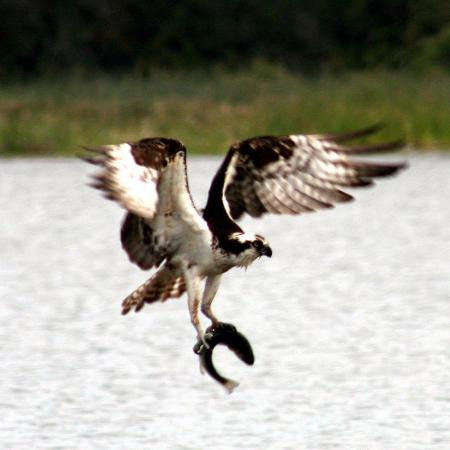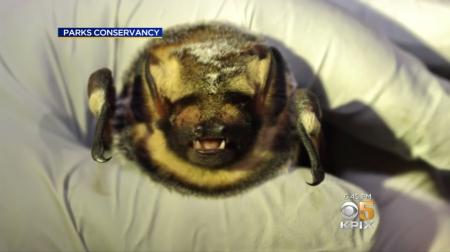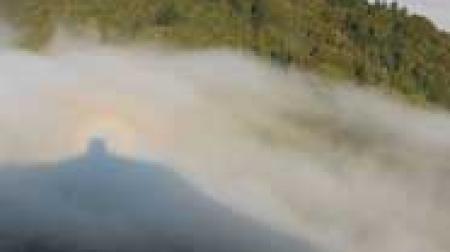Why Was This Indicator Chosen?
Because they feed almost exclusively on fish, the breeding success of Ospreys (Pandion haliaetus) in the lakes and reservoirs in the One Tam area of focus is a good indicator of water quality and fish abundance. The Kent Lake Osprey colony was first established in the mid-1960s and has been monitored continuously by the Marin Municipal Water District since 1981.
Persecution and environmental contamination in the 19th and early 20th centuries led Osprey to be listed as a California Species of Special Concern. The Kent Lake Osprey colony peaked in the mid-1990s, then entered a period of gradual decline over the subsequent two decades. Recent monitoring suggests the colony is currently about half of its former size.
What is Healthy?
A healthy nesting population of Osprey on Mt. Tam would remain stable over time. High levels of pair occupancy and annual reproductive success would be maintained within the normal range of variability, or above long-term average values based on recent historical monitoring.
What Are the Biggest Threats?
- Climate change and drought may negatively impact Osprey fishing and reproductive fledging success
- Contaminants such as mercury and residual DDT in nearby areas where Osprey are known to forage
What is The Current Condition?
The overall condition of Kent Lake’s Osprey colony is Good. Adequate dead tree nesting habitat is present at Kent Lake, and nest site occupancy has been above 75 percent for all but four of the past 13 years. Because reproductive success has not been measured since 2000, that remains unknown, but the numbers of active nests are encouraging.
How Sure Are We?
Overall confidence in these assessments is Moderate thanks to consistent nest survey data since 1981, recent tree counts, and encouraging signs of high levels of nest activity.
What is This Assessment Based On?
Monitoring and assessments of the number of occupied nests, nest site occupancy rate (the number of active nests as a percent of occupied nests), number of nestlings fledged from active nests, and the number of dead trees that provide nesting habitat (Evens, 2015).
What Don’t We Know?
Key information gaps include:
- Annual observations to determine reproductive productivity
- Foraging patterns and locations, prey availability, and local ecological dynamics of prey species (e.g., top smelt)
- The presence of mercury and other contaminants in the birds
resources
Evens, J.G. (2015). Osprey (Pandion haliaetus): The 2015 Nesting Season at Kent Lake, Marin County, California (Annual report). Corte Madera, CA: Marin Municipal Water District.
